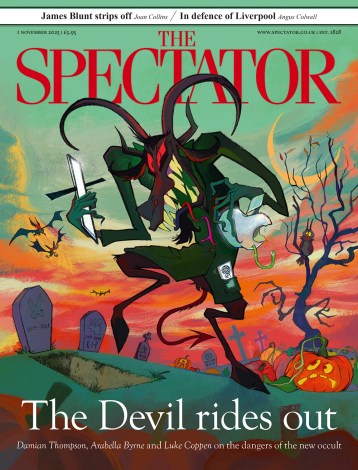 George Osborne’s budget, due in two weeks’ time, will be billed as an agenda for growth.
This is welcome, but a year late. The burning agenda now is the cost of living. It was our cover story for The
Spectator last October: why fret about mild 1 percent-a-year cuts, we asked, when the real killer will be prices? Petrol at 130p a litre is only the most visible sign of this. Other horrors
confront shoppers in the supermarket – salmon fillets up by a third, potatoes and butter by a quarter. When Alan Duncan speculated that petrol could hit 200p, he was on the right scent. While the
BBC is talking about cuts and Osborne is talking about jobs, Ed Miliband is now talking about the cost of living – even helping to launch a Commission on the Cost of Living. He has, I hate to say, chosen his campaign theme well. The cost
of living will be the story of 2011.
George Osborne’s budget, due in two weeks’ time, will be billed as an agenda for growth.
This is welcome, but a year late. The burning agenda now is the cost of living. It was our cover story for The
Spectator last October: why fret about mild 1 percent-a-year cuts, we asked, when the real killer will be prices? Petrol at 130p a litre is only the most visible sign of this. Other horrors
confront shoppers in the supermarket – salmon fillets up by a third, potatoes and butter by a quarter. When Alan Duncan speculated that petrol could hit 200p, he was on the right scent. While the
BBC is talking about cuts and Osborne is talking about jobs, Ed Miliband is now talking about the cost of living – even helping to launch a Commission on the Cost of Living. He has, I hate to say, chosen his campaign theme well. The cost
of living will be the story of 2011.
Inflation is rising twice as fast as pay, with the result being what Mervyn King casually described as the most protracted squeeze in living standards for 90 years. To paraphrase the Governor, we’ve never had it so bad. This story will run all year because things are set to get worse. The below chart shows Citi’s projections for RPI and CPI inflation for the rest of this year. Think of the howling headlines we read now of inflation at 4 percent, a mere twice the official target. Citi envisages CPI hitting 5.3 percent and RPI at 5.9 percent in September. By Christmas, they’d still be 4.4 percent and 5.8 percent respectively. (Citi’s forecasts run to 2015 without the hint of an inflation target being met.) There’s fat chance of pay settlements rising so high, therefore the nation faces a continual, miserable erosion of living standards.

Politically, the cost of living is a good bread-and-butter issue for Ed Balls and Ed Miliband. Mike Smithson once graphed the link between petrol prices and support for the government. But from
the revolutions of 1830 up to 2011 Cairo, the link between food price spikes and discontent with the government is one of the clearest links in history. You don’t need a focus group to tell you
that the coming inflation is very bad political news – and that Osborne, with his VAT rises, has so far been part of the problem. So when the Commission on the Cost of Living reports, you can
guarantee it’ll have a miserable and deeply resonant story to tell. Especially if (as expected) debt interest rates are returning to normal. Here, with thanks again to Citi, are its projections for
the base rates:

Given that British households are the most indebted in the rich world, this will hurt. Awkwardly for Osborne, he will struggle to say “I am on your side,” because so much of price is tax. Of the 130p petrol price, 80p of it is pure tax. Osborne could eliminate it in a stroke if he wanted. Of course, it would be fiscally reckless of him so to do, but the truth is that the sale of petrol is a 60/40 joint venture between HM Treasury and the oil companies. Americans pay 50p a litre, (and complain about it).
This cost of living explosion is not what George Osborne war-gamed for. Last year, people like Mervyn King were confidently predicting that inflation would be back to target at the beginning of the year. It was not then clear that King’s forecasting powers are several notches below that of the average octopus – so Osborne penciled in a post-election VAT rise. He promised an 80/20 split between cuts and tax rises, but he was a bit squeamish in the end about cuts (which average 1.3 per cent a year). As things turned out, the tax/cuts ratio is 53/47 this year and 64/35 next year. Tories prefer taxing consumption to income – as Osborne says, VAT is the tax which does least economic harm. But when Osborne planned this, he did not imagine his policies would compound what has turned out to be the highest inflation in Western Europe.
He is not short of options. There is plenty of scope to increase his mild cuts, and offer tax relief that way. He’s likely to announce at his budget that he has some £8bn more tax revenue than he expects: that could go into tax cuts for motorists or (my favourite option) for the low-paid. Cutting taxes for the low-paid has just helped Sweden achieve the fastest growth in Europe. The Treasury civil servants are ideologically opposed to the notion of a tax cut that pays for itself, even though it is being demonstrated in front of their eyes.
It’s vital that Osborne articulates a growth/jobs agenda. It’s great that he’s planning to make economically deprived parts of Britain into low-tax enterprise zones. The progress he’s made already on the deficit means that confidence is up and employment is steadily rising from its Feb 2010 low. Since Osborne arrived in office, the consensus forecast for claimant unemployment at the year-end has fallen by 100,000: it is working. So Osborne’s jobs agenda, while vital, is going reasonably well (as long as you don’t ask which country the new workers hail from). His main problem is trying to explain that the policy is working.
Tim Montgomerie has a must-read summary of the coalition’s priorities today. As he says: “Year I of Osborne’s Chancellorship was about cuts. Years II, III and IV will be about growth.” This sounds like a battle plan drawn up before inflation exploded back on the national scene. James Forsyth says in the Mail on Sunday today that Osborne has told his Cabinet that growth is the priority for his budget, and “other things will have to come second”. That will be music to Ed Miliband’s ears: it means he has the cost of living agenda all to himself. It also means Osborne is likely to press ahead with policies to make the cost of living worse. Osborne is sitting there with policies to make the cost of living worse, for rich and poor. From the fuel duty escalator to the proposed new 52p top tax rate(which, we learn today, HSBC directors won’t hang around for). If the Chancellor wants to say, as he did yesterday, “We are on your side,” he will need firm policies to prove it. He has just over two weeks to come up with some.







Comments